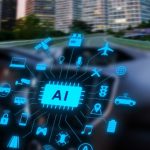Space telescopes have revolutionized our understanding of the universe by providing clear and unobstructed views from above Earth’s atmosphere. Unlike their ground-based counterparts, they avoid interference from weather and atmospheric distortions. However, their inability to be easily repaired has posed significant challenges, especially since the conclusion of NASA’s Space Shuttle program in 2011. Innovators are now turning to robotic servicing missions to address these limitations, potentially extending the operational lifespans of pivotal instruments like the James Webb Space Telescope and Gaia.
Over the years, space telescopes have been invaluable in astronomical research, but their maintenance has been a persistent issue. The Hubble Space Telescope, for example, benefited from five servicing missions by space shuttle crews, highlighting the importance of regular upkeep. With the shift towards deep space operations, new strategies are essential to ensure that these advanced observatories remain functional and continue to deliver critical data for years to come.
How Will Service Missions Extend Telescope Lifespans?
Next-generation telescopes are being designed with the capacity for robotic servicing in mind, allowing for interventions such as refueling, repairing damaged components, and upgrading critical systems. This proactive approach aims to prevent the premature retirement of these telescopes, ensuring they can continue their missions without the need for expensive and logistically challenging manned missions.
What Challenges Face Deep Space Servicing?
One major obstacle is the design of trajectories that enable safe rendezvous with telescopes located far from Earth, such as those positioned at the Sun-Earth Lagrange point L2. The delicate nature of space telescopes, particularly their exposed mirrors which are vulnerable to micrometeorite impacts, necessitates precise and non-invasive methods for maneuvering service spacecraft. Engineers must develop techniques that allow for gentle docking and maneuvering to avoid damaging these sophisticated instruments.
Can Optimal Trajectories Make Servicing Feasible?
Researchers are leveraging advanced trajectory optimization methods to identify efficient and safe paths for servicing missions. By utilizing “hidden highways” in the solar system, which take advantage of orbital mechanics, mission planners can reduce fuel consumption and costs. “We’re trying to stay a step ahead so there is a plan to replace broken mirrors, for example,” said Professor Siegfried Eggl, emphasizing the need for sustainable maintenance strategies.
The University of Illinois Urbana-Champaign team, including Professor Siegfried Eggl and Ruthvik Bommena, have made significant strides in designing feasible service missions for current space telescopes. Their research suggests that with the right technological advancements and mission planning, extending the operational life of space observatories is within reach, offering continued benefits to the scientific community.
As these robotic servicing missions become a reality, the ability to maintain and upgrade space telescopes will likely enhance the longevity and capabilities of these critical instruments, ensuring that they remain at the forefront of astronomical discovery for many years to come.










